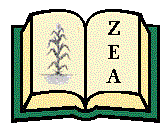-

A Description of New England
John Smith
John Smith (1580-1631) made one voyage to the coast of Massachusetts and Maine in 1614, and attempted a second one the following year, only to be captured by French pirates and detained for several months near the Azores before escaping and making his way back to England. This book is the story of these two voyages.
Smith went to the coasts of America north of Virginia to explore the opportunities for fisheries, fur trading, and settlement. Smith was a veteran soldier, sailor, traveller, explorer, cartographer, and colonist: he had fought the Spanish in France and Italy, the Turks in Hungary and Transylvania, and the Algonkians in Virginia; he had sailed the Atlantic, Mediterranean, and the Caribbean; he had been a prisoner of the Ottomans and a slave in Constantinople, had journeyed through Russia, Europe, and North Africa; he had been both a president and a prisoner in the Jamestown colony, and had explored the Potomac River and mapped the Chesapeake Bay.
His Description of New England describes the fishing, soils, inhabitants, fauna, flora, and climate of the coastal region from Cape Cod to Penobscot. This work is the first to apply the term “New England” to that portion of the North America from Long Island Sound to Newfoundland. At that time it held a few trading and fishing stations, and French traders from the north and Dutch from the south carried on commerce in furs with the natives. There was a prosperous fishery to the north, where cod were taken by ships from Portugal, Holland, and Spain. To Smith, these were evidence of the richness of commodities to be had, and signs of the strategic importance to England of securing permanent settlements in the region. Smith had departed Virginia in 1609 under a cloud of accusations and had quarrelled with the leaders of the privately-held Virginia Company. Seeking a new arena for colonial opportunities in the new world, Smith saw New England as a place where English life could be transplanted to America, and this work is an extended advertisement and prospectus for investors and settlers, with Smith to provide the expertise and leadership.
This ebook edition is based on the London edition of 1616, and preserves the spelling and punctuation of that original. Some explanatory notes have been added, along with a discussion of the text and a list of typographical errors corrected.
-

A Brief and True Report of the New Found Land of Virginia
Thomas Hariot
This is an ebook edition of the first book published by an English colonist in America. Its author, Thomas Hariot or Harriot, was a cartographer, mathematician, astronomer, linguist, and philosopher, who was a participant in Sir Walter Ralegh’s first attempt to establish a colony in “Virginia,” on Roanoke Island in modern-day North Carolina, from June 1585 until June 1586. Hariot had learned the rudiments of the Algonkian language from two natives brought back to England from an earlier exploratory voyage, and he served as interpreter and liaison with the native peoples of the surrounding region. His Brief and True Report focuses largely upon the native inhabitants, giving much valuable information on their food sources, agricultural methods, living arrangements, political organization, and religion. Published in 1588, with Ralegh’s support, to help incite both investment and settlement, Hariot’s 13,000-word account also gives many details of the “merchantable commodities,” plants, animals, and economic opportunities to be found there. Written by an ethnographer and natural scientist who was an integral part of the first English attempt at American colonization, the Brief and True Report is by far the most important early English account of North America. This ebook edition contains some essential annotations, a textual note, and links to other important online materials relating to the Roanoke colony.
Most of these works have been previously issued in the "Electronic Texts in American Studies" series at http://digitalcommons.unl.edu/etas/
They are re-issued here for the opportunity to feature them as e-books and to display their graphic covers.
Printing is not supported at the primary Gallery Thumbnail page. Please first navigate to a specific Image before printing.


